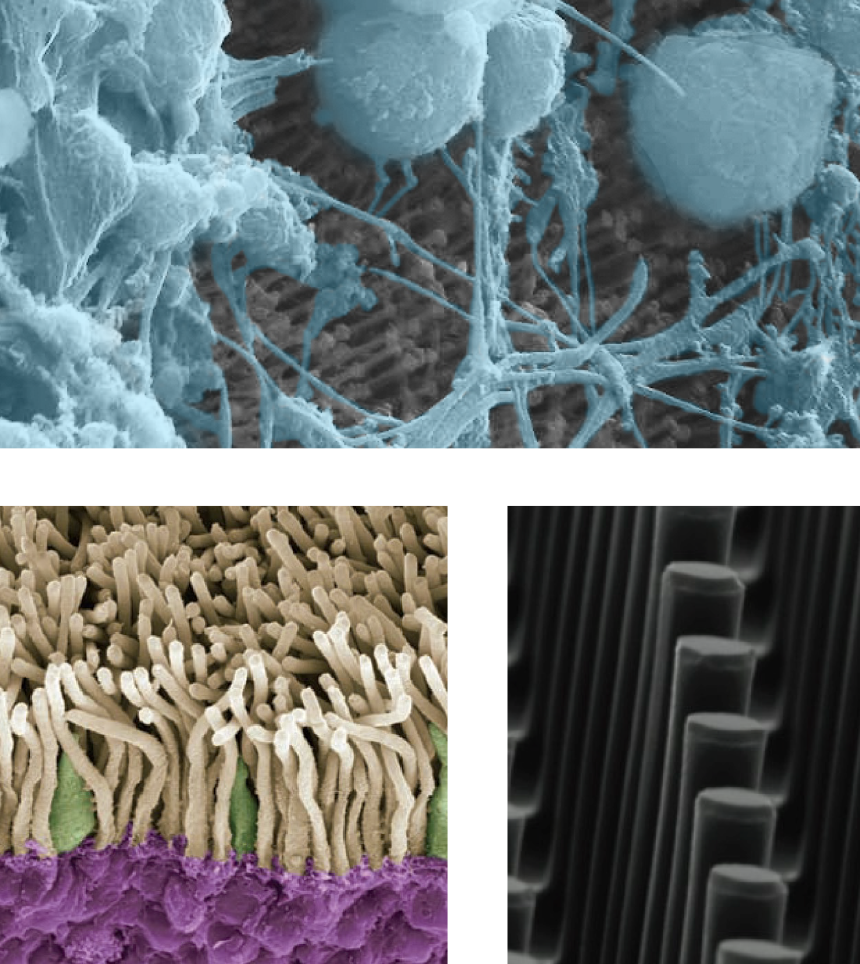Degenerative retinal disorders are the leading cause of blindness in the Western world. The two principle types of degenerative retinal disorders are Age Related Macular Degeneration (AMD) and Retinitis Pigmentosa (RP). Both disorders have devastating impacts on quality of life and tremendous socioeconomic consequences.
Over time, patients with AMD become functionally blind. RP is even more devastating than AMD in a very real way because the typical age of diagnosis is in the late teens or early twenties. These patients are often completely and profoundly blind by their late thirties or early forties.
A number of approaches continue to be explored to treat AMD and RP. Attempts at slowing down the rate of degeneration and reversing the resultant loss of vision have included genetic, pharmacological, surgical, and cellular interventions.. While each of these treatments offers promise, they also face numerous challenges that have kept high impact therapies from reaching the clinic. Current state of the art with any these technologies is at best limited to simple light perception and very limited fields of view.

Nanovision’s Optoelectronic Nanowire Retinal Prosthesis

Nanovison offers a completely novel nanotechnology approach to retinal prosthesis to cure degenerative retinal disorders. We are developing arrays of light sensitive optoelectronic nanowires that can be bundled together into small sized electrodes that form the core of a neural retinal stimulation system. The nanowire arrays are interfaced with integrated circuitry that provide feedback control over light modulation of the electrical stimulus pulse from the nanowires, and also provides power to the system in order to adjust the baseline level of output activity. This provides a mechanism for adapting between different ambient light levels, e.g. bright sunlight versus a dimly lit room.
The entire device will be packaged in a surgically implantable biologically compatible material. The device is then surgically implanted into the subretinal space between the retinal pigment epithelium and the neural retina in the space created by the degenerated photoreceptors.
The Nanovision Difference

We enable efficient stimulation of retinal neurons when light hits the nanowires with a quantum mechanical confinement effect. We are the first group to show that an optoelectronic nanowire technology can successfully achieve photoelectronic stimulation of the retina and retinal tissues.
Our approach builds on the goals and previous lessons of microtechnology retinal prosthesis, but has the potential and opportunity to actually achieve neural stimulation densities equivalent to the biological resolution of photoreceptor neurons in the normal healthy eye. On-going neurobiological tests in vitro (in a dish) allow us to carry out detailed electrophysiological characterizations of the devices and their function, while in vivo tests provide the opportunity to surgically implant devices into the eye and measure the electrophysiological function of the parts of the brain that process visual information in response to stimulating the implant in the eye.

Nanovision Labs is working on the future of our core technologies for both biological and non-biological applications, pushing the technical and engineering boundaries of what is possible to new levels.
Ready to learn more?
Our technology is singularly unique in how the sub retinal device tailors the electrical neural stimulation parameters to the individual patient. It is the most advanced technology available capable of achieving such a degree of patient specificity.
Contact Us